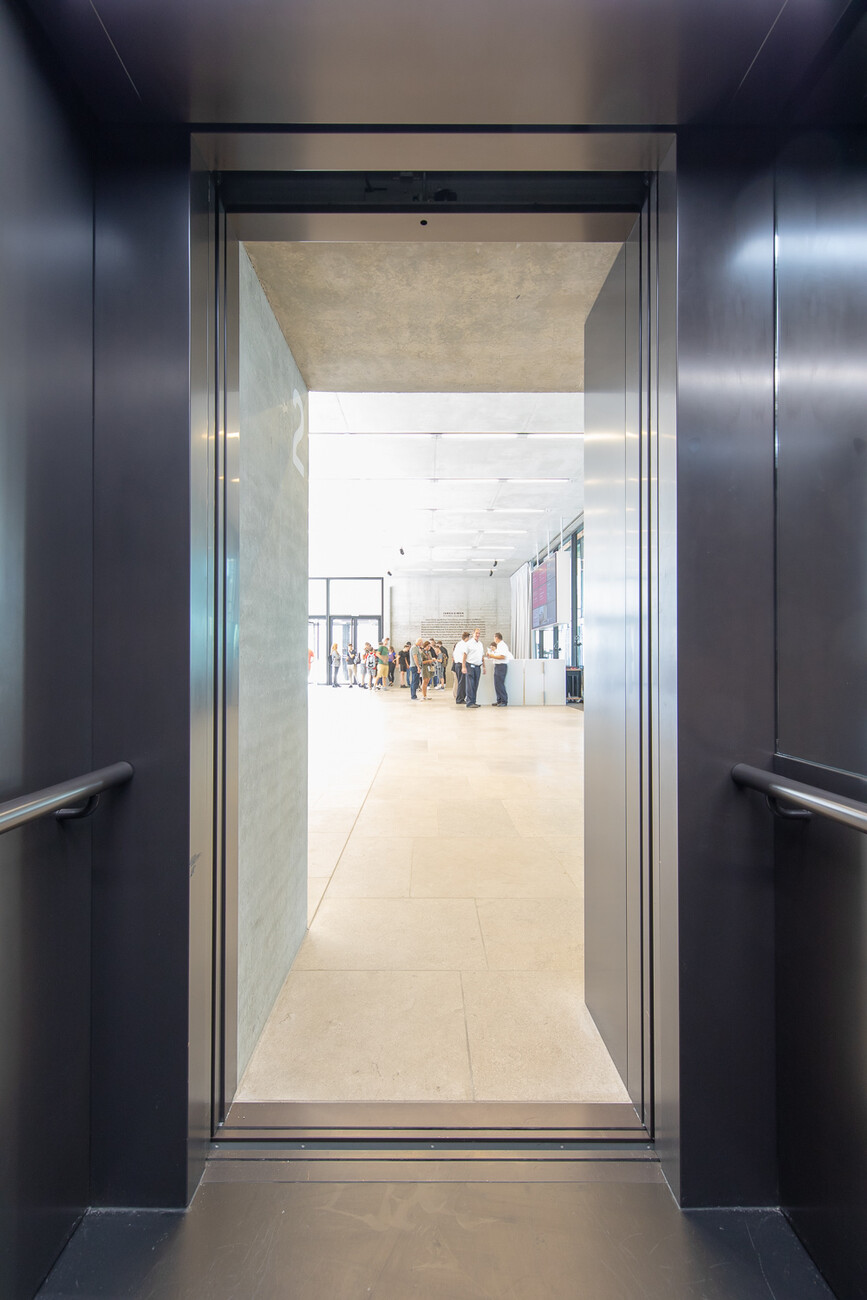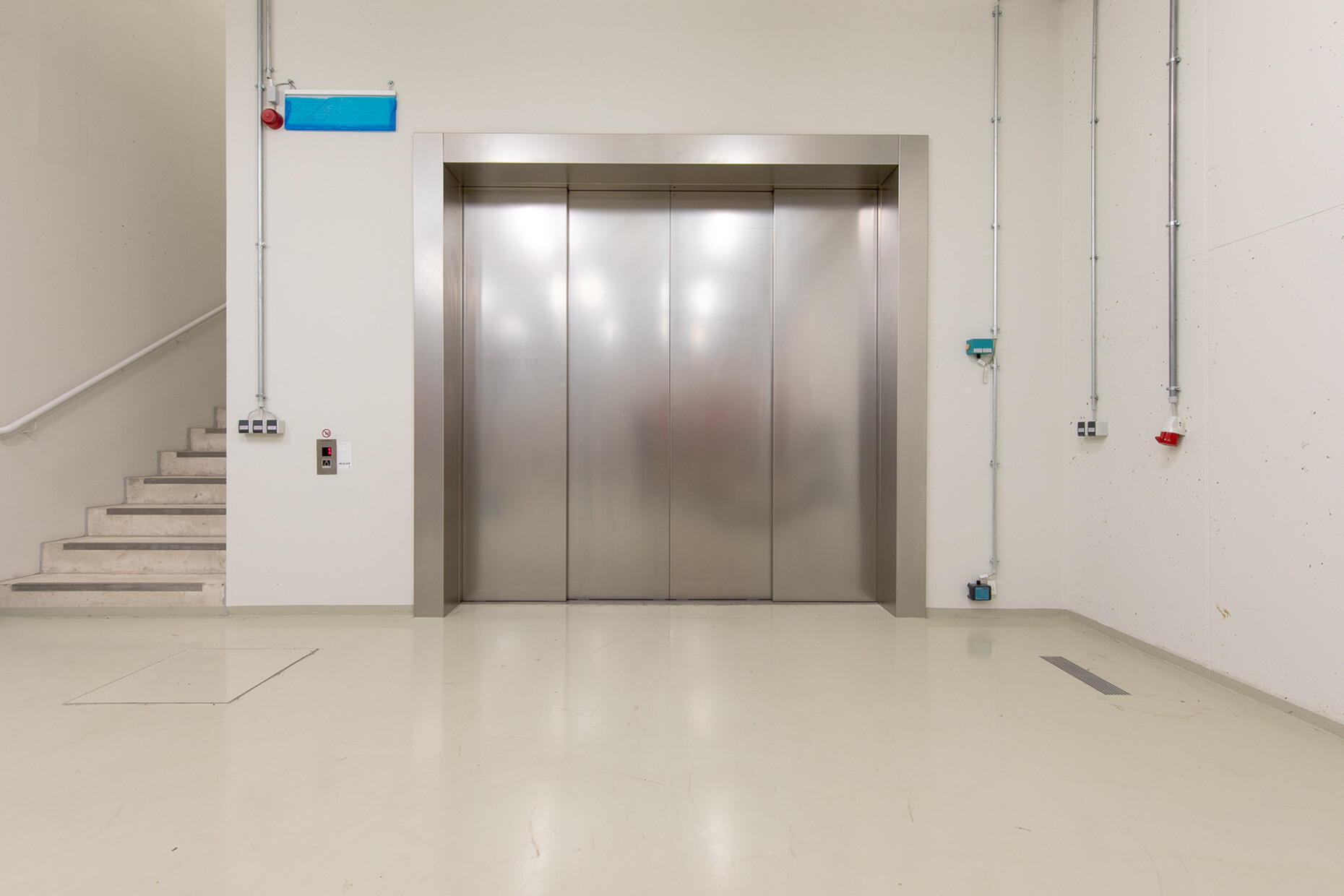Part of the artwork
In the middle of the portico in David Chipperfield’s new James-Simon-Galerie on Berlin’s new Museum Island stands the glass car of a modern elevator. What at first sight might seem to be a stylistic inconsistency is at second glance only logical: After all, despite all the historical allusions it contains, the new building was not intended by any means to be historicist. Indeed, there are many instances where the architect juxtaposes classic and modern elements such as the colonnades facing the River Spree and the enormous panoramic windows in the basement level below.
Moreover, the prominent placing of the elevator is a clear indication of its significance: The James-Simon-Galerie extends out over four levels that are open to the public. Moreover, stairs – both inside and out – are one of the building’s key design features. It is therefore only logical that the elevators should not be tucked away out of sight. And it is just as natural that David Chipperfield should demonstrate the same precision in the design of the elevators as was brought to bear with the stairs. Four lifts in all provide access to the gallery: the solo elevator previously mentioned that ends in the portico, a double elevator in the center of the building, and a large goods elevator that can be used among other things to transport exhibits to the room for temporary exhibitions in the basement.
The elevators were supplied by the Swiss company Schindler. Even for the Swiss specialist it was not a routine commission – in several respects: “Given the special shape of the shafts in the James-Simon-Galerie we were not able to use standard products,” explains Schindler’s Christian Thomas. “For such situations we have a team of some 40 engineers who develop customized special solutions.” Accordingly, the solo elevator was realized as a hydraulic system, so that hardly any technology is visible in the glass cube at the top – which experts refer to as the “overhead”. The interior of the car is also custom-made according to a design by David Chipperfield: Its lower half is clad with planks of smoked oak, while above this base zone mirrors are used. The car ceiling is made of burnished, waxed bronze, as is the interior lining of the doors, the handrails and the control panel. Three light strips in the ceiling provide the regular and emergency lighting.
In the double elevator (connecting the gallery’s two foyer levels that are positioned one on top of each other) each of the two outer doors per floor is clad with burnished bronze; the same goes for the surface in-between used for the labeling, display and elevator call buttons. The same material also dominates inside the two cars: with the exception of a large mirror the walls and ceiling are also made entirely of bronze. By contrast, largely functional aspects shape the look of the car in the goods elevator. Here the walls and ceilings are made of stainless steel with continuous wooden strips providing impact protection. The hydraulic lift can carry up to six tons and is also spacious enough for large, bulky exhibits. In other words, not only visitors but also works of art can be safely transported from one place to another.





















